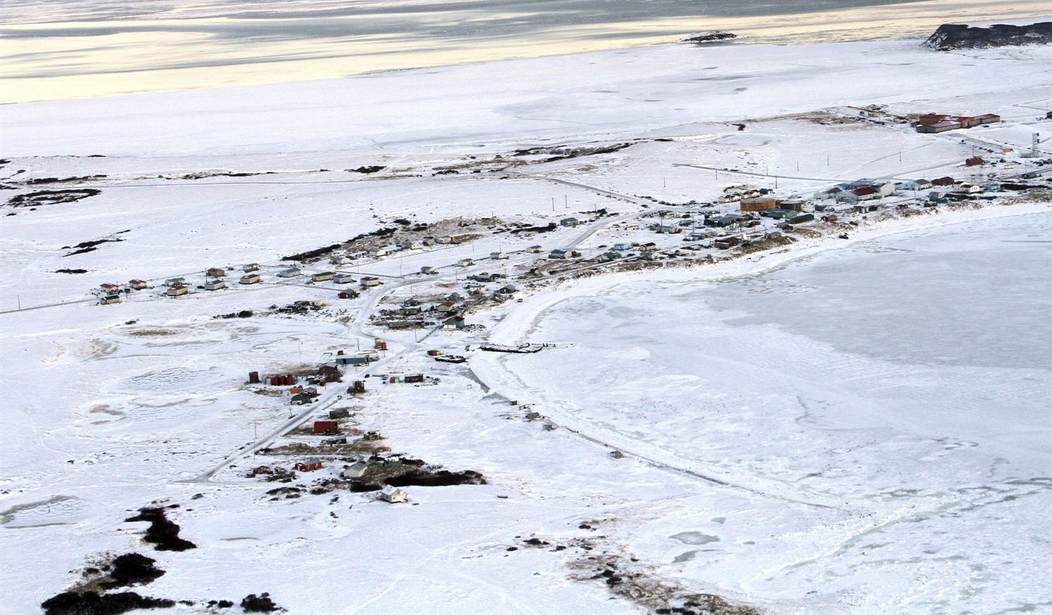Way back in 1980, Congress passed the Alaska National Interest Lands Conservation Act, establishing the Arctic National Wildlife Refuge and making numerous other land use decisions for our 49th state. Section 1002 of the act postponed a decision on managing ANWR’s 1.5-million-acre coastal plain, which has enormous oil and gas potential and is important summertime wildlife habitat.
For four decades, environmentalists blocked legislation that would have opened the coastal plain to leasing and drilling. In 1995 President Clinton vetoed a pro-drilling bill that had passed both houses.
At long last, the tax-cut legislation just passed by Congress allows America to benefit from the petroleum resources that experts predict will be found in a small section of the plain, along Alaska’s northern coast. The legislation directs the Interior Department to hold at least two lease sales over the next 10 years, for a maximum of 2,000 acres opened to drilling. Analysts say the sales could fetch as much as $2.2 billion.
The area contains an estimated 10.4 billion barrels of oil, says Alaska Senator Lisa Murkowski, chair of the Senate Energy and Natural Resources Committee. Others put the petroleum potential even higher.
The U.S. Geological Survey and Congressional Research Service say it’s 95% likely that there are 15.6 billion barrels of oil beneath ANWR. With today’s exploration, drilling, fracking and other technology, up to 60% of that may ultimately be recoverable.
At $50 a barrel, that represents $460 billion that the USA would not have to send overseas; tens of billions in Alaskan and United States royalty and tax revenues; and thousands of jobs in oilfield, manufacturing and many other sectors.
After the IRS, oil company oil and gas royalty payments represent the single largest contribution to the U.S. treasury. Companies that produce from federal onshore and offshore leases pay royalties of up to 18% of wellhead prices, and then pay corporate taxes on profits and sales taxes at the pump. Workers pay income taxes, instead of receiving unemployment and welfare checks.
Recommended
Every step in the leasing, drilling, production and pipeline process will require extensive environmental reviews. Unfortunately, each step will likely generate lawsuits and delays.
As they have since long before 1980, activists continue to claim that any drilling would destroy the entire ANWR area’s wilderness character and threaten its caribou, polar bears, birds and other wildlife. In all too typical hyperbole, League of Conservation Voters president Gene Karpinski claimed the tax law provision will “turn one of our last remaining wild places into an industrial oilfield.” That’s absurd.
Alaska alone has 57 million acres (more than all of Utah) set aside as wilderness, plus tens of millions more wild acres off limits to drilling in national park, wildlife refuge and similar designations. Nationwide, land several times the size of California is protected in these and other land use categories.
ANWR is the size of South Carolina: 19 million acres. Of this, far fewer than 2,000 coastal plain acres would actually be disturbed by drilling, roads and other development work. That’s 0.01% of ANWR; one-twentieth of Washington, DC; 20 of the buildings in which Boeing manufactured its 747 jetliners.
To claim this minimal impact will despoil the entire refuge is like saying a few farms and airports scattered along South Carolina’s northern border would kill wildlife and ruin scenery throughout the state.
The potentially oil-rich coastal plain is actually flat, treeless tundra, 3,500 miles from Washington, DC – and 50 miles from the beautiful Brooks Range mountains that feature so prominently and deceptively in Sierra Club and other anti-drilling campaigns.
Even more telling, the same environmentalists never object to forests of 400-foot-tall wind turbines installed in or next to forests, grasslands, wildlife sanctuaries, migratory bird flyways and other sensitive areas – where they slice and dice eagles, falcons, geese, bats and other magnificent flying creatures day after day, year after year.
During some eight months of winter, when drilling will take place, virtually no wildlife are present in the coastal plain. Food is buried under snow and ice, and temperatures plummet as low as minus 40 F. The tundra turns rock solid. Spit, and your saliva freezes before it hits the ground.
But the nasty conditions mean exploratory drilling can be done using roads, “drill pads” and even airstrips that are all constructed with ice and snow. Come spring, all of this will melt, leaving only puddles, little holes and a few permanent facilities. The caribou will return – just as they have for years at the nearby Prudhoe Bay and Alpine oilfields – and do what they always have: eat, hang out and make babies.
In fact, the Prudhoe Bay oilfield’s Central Arctic caribou herd is over 20,000 today, compared to 5,000 in 1975. Arctic fox, geese, shore birds and other wildlife also return each spring, along with the Alaska state bird: giant mosquitoes.
If oil is discovered, modern Arctic drilling technologies from small gravel pads will ensure minimal land impacts, as other North Slope operations have demonstrated. Each drill pad will support multiple wells, and modern “directional” and “extended reach” drilling technologies will allow companies to punch multiple holes a mile deep and five miles long in any direction, steering drill bits to penetrate multiple oil zones and hit distant targets far below the surface, without disturbing the tundra high above.
Coupled with the ability to fracture rock formations and stimulate them to produce far more oil and natural gas liquids than previously possible, this accuracy means a series of small sites totaling less than 2,000 acres could produce up to 15 billion gallons of petroleum annually.
That’s far better than producing 15 billion gallons of ethanol annually from corn grown on an area larger than Iowa: 36 million acres – via a process that also requires massive amounts of water, pesticides, fertilizers and fossil fuels, to create fuel that gets one-third less mileage per gallon than gasoline.
Inuit Eskimos who live in or near ANWR have supported drilling by an 8:1 margin. They no longer want to live in poverty – especially after having given up their traditional land claims for oil rights that Congress, greens, presidents and courts have repeatedly denied them.
Gwich’in Indians have opposed ANWR drilling, and some were paid by environmentalist groups to appear in anti-drilling commercials. However, they actually live hundreds of miles away on the other side of the Brooks Range. And they leased many of their own tribal lands to generate revenue. Their leased areas were close to a major caribou migratory route, where caribou often birth their calves before arriving in ANWR. Unfortunately for the Gwich’ins, no oil was found.
Drilling in ANWR will also ensure sufficient production to keep the Trans-Alaska Pipeline in operation. Right now, declining North Slope production threatens to reduce oil in the pipeline to a point where it cannot stay sufficiently warm to flow under months-long winter conditions.
The pipeline needs between 250,000 and 350,000 barrels of oil per day to stay open. If there are inadequate supplies, because ANWR or other deposits are not developed, the pipeline will be shut down – leaving millions of barrels and billions of dollars behind. That makes ANWR oil doubly important.
Adding to the complexities, $50-per-barrel oil prices, shale development in the Lower 48, and decades-old seismic data mean relatively few oil companies may be interested in leasing acreage in the remote, frozen area. But America’s long-term strategic interests require a thorough look at ANWR’s potential.
Spending U.S. or Alaskan funds to pay an independent company to conduct high-tech modern seismic and other surveys of the coastal plain would ensure that energy companies and American citizens have the best possible information on which to base decisions on leasing and exploring those 2,000 scattered acres.
ANWR’s energy belongs to all Americans. It can and should be produced safely, to generate tremendous oil, gas, job, revenue and other bounties – in yet another huge benefit from this tax reform legislation.
























Join the conversation as a VIP Member